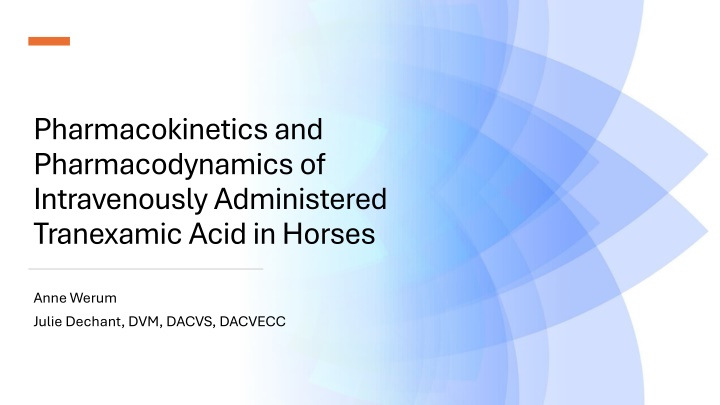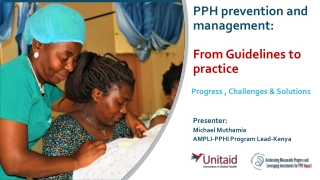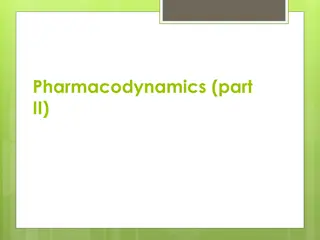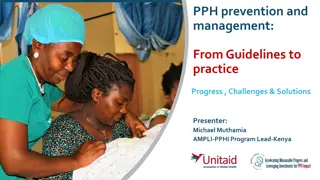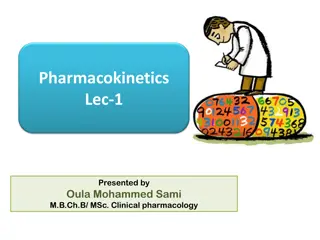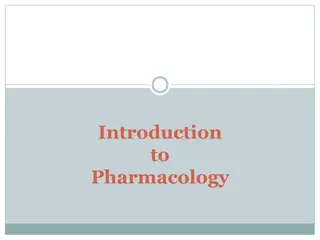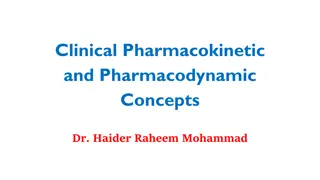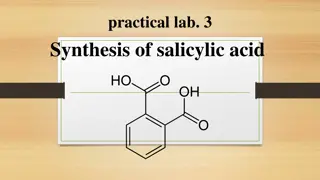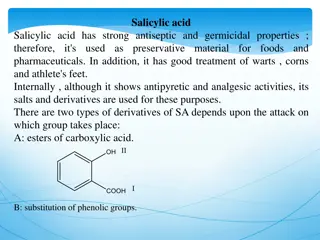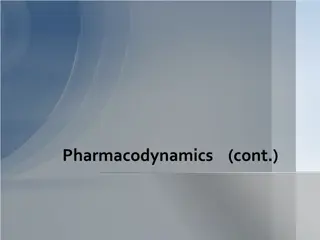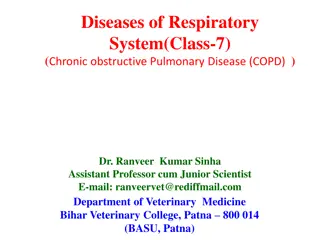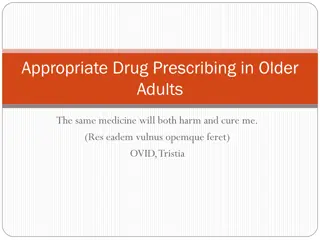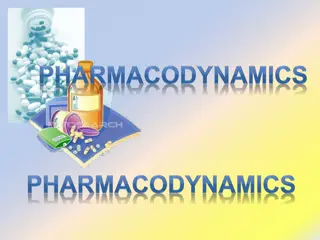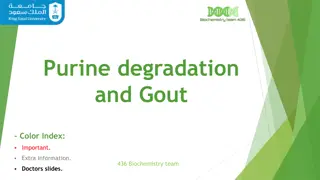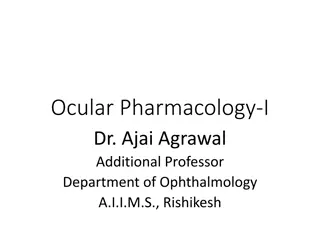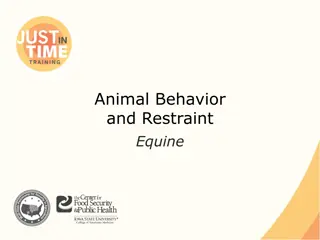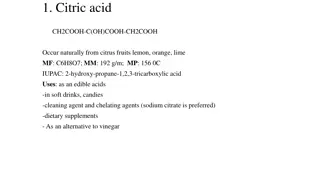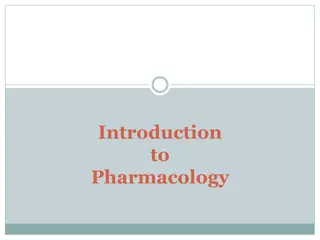Pharmacokinetics and Pharmacodynamics of Tranexamic Acid in Horses
This study delves into the pharmacokinetics and pharmacodynamics of intravenously administered tranexamic acid in horses, exploring its antifibrinolytic properties and potential therapeutic benefits in various clinical scenarios. The research includes insights into drug indications, lysine analog mechanisms, empirical dosing, and hypotheses to evaluate the drug's effectiveness in horses through coagulation parameters and serum concentrations over time.
Download Presentation

Please find below an Image/Link to download the presentation.
The content on the website is provided AS IS for your information and personal use only. It may not be sold, licensed, or shared on other websites without obtaining consent from the author.If you encounter any issues during the download, it is possible that the publisher has removed the file from their server.
You are allowed to download the files provided on this website for personal or commercial use, subject to the condition that they are used lawfully. All files are the property of their respective owners.
The content on the website is provided AS IS for your information and personal use only. It may not be sold, licensed, or shared on other websites without obtaining consent from the author.
E N D
Presentation Transcript
Pharmacokinetics and Pharmacodynamics of Intravenously Administered Tranexamic Acid in Horses Anne Werum Julie Dechant, DVM, DACVS, DACVECC
Introduction Tranexamic acid (TEA) = antifibrinolytic drug Prevent clot breakdown and prolong clot maintenance Antifibrinolytic drug indications Abdominal and intra-articular bleeding Intra-op and post-op Colic surgery Sinus surgery Castration Traumatic injury
Introduction: Lysine Analog MoA Lysine analog binds to lysine binding site on plasminogen Plasminogen cannot bind to fibrin Plasminogen cannot break down fibrin clot
Introduction: Lysine Analogs Epsilon Aminocaproic Acid (EACA) No evidence of increased clot maintenance Conflicting evidence on effect on alpha2-antiplasmin No prevention of exercise induced pulmonary hemorrhage (EIPH) Tranexamic Acid (TEA) 5-10x more potent than EACA in humans No pharmacodynamic studies in horses exist Empirical doses in horses: 5 25 mg/kg (Australian Manufacturer) 20 mg/kg (Minamijima et al. 2023) TEA effective at 1/20th human concentration in ex vivo equine study (Fletcher et al. 2013) Human dose: 10 mg/kg
Introduction: Purpose Pharmacokinetics Serum concentrations of TEA over 24h after IV administration of single dose 5 mg/kg TEA Pharmacodynamics Coagulation parameters PT and PTT Fibrinogen D Dimers Antithrombin Plasminogen Antiplasmin Platelet count *Attempted to create Hyperfibrinolysis Model to analyze effect of TEA on fibrinolysis using point-of care viscoelastic analyzer [VCM Vet] Model was not successful
Hypotheses A dose of 5mg/kg tranexamic acid: 1) Will reach the estimated therapeutic dose of 0.512 ?g/ml 2) Will result in coagulation parameters that suggest decreased fibrinolysis and increased clot maintenance in horses
Materials and Methods 6 clinically healthy horses Sex 3 geldings 3 mares (bilaterally ovariectomized) Age range: 10 19 years old Weight range: 536.5 669 kg Breeds 3 Thoroughbred Horses 2 American Paint Horses 1 Quarter Horse
Materials and Methods Single dose study 5 mg/kg TEA administered over 5 min via IV R jugular catheter Samples 0-9h collected via L jugular catheter, 12h & 24h via venipuncture Pharmacokinetic sample collection Baseline (0 min) 15 min, 30 min, 45 min 1h, 2h, 3h, 4h, 6h, 9h, 12h, 24h Pharmacodynamic sample collection (coagulation parameters) Baseline (0 min) 1h, 4h, 9h
Materials and Methods Pharmacokinetic Analysis K. L. Maddy Equine Analytical Chemistry Lab at UC Davis TEA Serum Concentration Analysis Pharmacodynamic Analysis Comparative Coagulation Laboratory at Cornell University PT, PTT, Fibrinogen, D Dimers, Antithrombin, Plasminogen, Antiplasmin Clinical Hematology Laboratory at the Veterinary Medical Teaching Hospital at UC Davis Platelet Count
Materials and Methods Statistical Analysis Repeated measures ANOVA Compare coagulation parameters at time 0h to 1h to 4h Coagulation parameters: PT, PTT, Fibrinogen, D Dimers, Antithrombin, Plasminogen, Antiplasmin Level of Significance: < 0.05
Expected Results: Pharmacokinetics TEA Serum concentrations > 0.512 ?g/ml 0.512 ?g/ml = estimated therapeutic plasma concentration of TEA (Fletcher et al. 2013) At least first 1h
Expected Results: Pharmacodynamics Coagulation Parameter Expected Result Interpretation PT (prothrombin time) No difference Extrinsic & common coagulation pathway PTT (partial thromboplastin time) Fibrinogen No difference Intrinsic & common coagulation pathway No difference Precursor of fibrin D Dimers Decreased Degradation of cross-liked fibrin Antithrombin No difference Anti-coagulant Plasminogen Increased Precursor of plasmin (fibrin degradation) Antiplasmin Decreased? Inhibitor of plasmin (fibrin degradation) Platelet count No difference
Results: Adverse Effects No signs of: Colic Decreased appetite Seizures Thrombophlebitis
Discussion: Pharmacodynamics Future Studies TEG Study with collected citrated plasma Additional pharmacodynamic study if VCM Vet hyperfibrinolysis model can be created Clinical trial with horses where lysine analog is indicated Tranexamic acid (TEA) vs epsilon aminocaproic acid (EACA) TEA vs placebo (ethical considerations)
Discussion: Limitations No direct measurement of fibrinolysis Clinically healthy horses Low sample size (n=6) All horses were neutered Limited breed variation
Conclusions We anticipate that this study, in conjunction with future ancillary studies, will provide evidence-based recommendations for the clinical use & dosing of tranexamic acid (TEA) in horses.
Acknowledgements Julie Dechant, DVM, DACVS, DACVECC Heather Knych, DVM, PhD, DACVCP and the K. L. Maddy Equine Analytical Chemistry Lab Staff at UC Davis Center of Equine Health UC Davis Students Training in Advanced Research (STAR) UC Davis School of Veterinary Medicine/ Center for Equine Health Endowment Funds Horses: Fluorescent, Casino (Laid Back and Lazy), Candy, Conner (The Art Connection), Monsieur W, Pete
Supplemental Slides Anne Werum Julie Dechant, DVM, DACVS, DACVECC
Introduction: Bleeding in Horses Hurcombe et al. 2007
Introduction: Measuring Coagulation PT and PTT Fibrinogen D Dimers Antithrombin Plasminogen Antiplasmin Platelets
Introduction: Measuring Fibrinolysis Viscoelastic monitoring TEG Laboratory based Sensitive and precise (gold standard) Sensitive to user variability, delay, and temperature Expensive VCM Vet Point of care Easy to use and portable Less sensitive Difficult to manipulate Only runs for 1 hour
Introduction: Attempted VCM Vet Hyperfibrinolysis Model 1 ug/ml tPA added Normal
Discussion: Pharmacokinetics Results from Minajima et al. Pharmacokinetic study: 8 horses given 20 mg/kg TEA IV Estimated therapeutic concentration (ETC) = 0.512 ug/ml ETC x 4 = 2.48 ug/ml Our study gave of the dose (5 mg/kg) Minajima et al. 2023, Figure 1
Discussion: Pharmacokinetics Results from Minajima et al. Pharmacokinetic study: 8 horses given 20 mg/kg TEA IV Estimated therapeutic concentration (ETC) = 0.512 ug/ml ETC x 4 = 2.48 ug/ml Our study gave of the dose (5 mg/kg)
Results: Pharmacokinetics Time [TEA] (mg/ ml) 0 min 15 m 30 m 45 m 1 h 2 h 3 h 4 h 6 h 9 h 12 h 24 h Estimated therapeutic concentration = 0.512 mg/ml
Results: Pharmacodynamics Coagulation Parameter PT PTT Fibrinogen D Dimers Antithrombin Plasminogen Antiplasmin Platelets Expected Result No change No change No change Decreased No change Increased Decreased No change Actual Result
